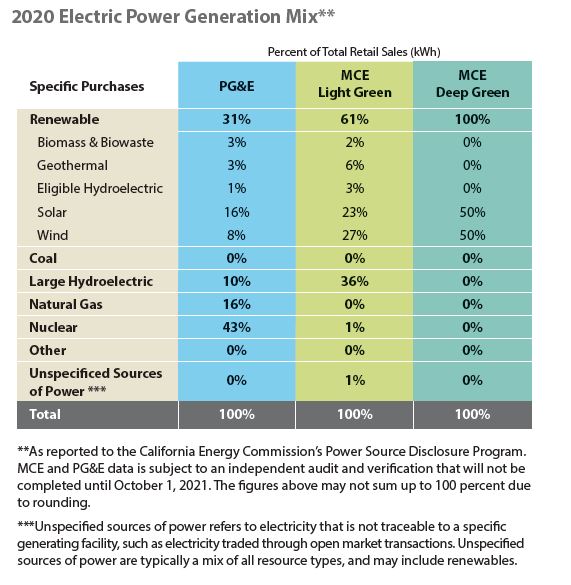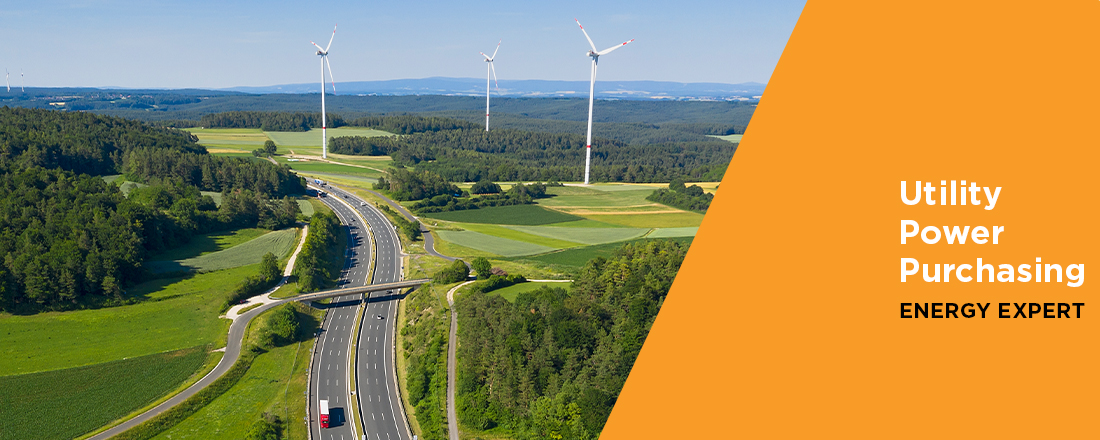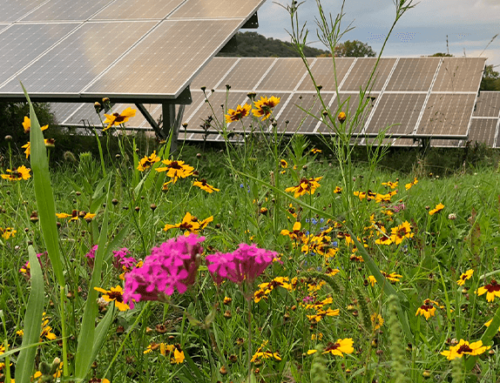MCE’s Energy Expert series takes a deeper dive into more complex energy topics. Explore topics like this, microgrids, and net energy metering in greater detail through our Energy Expert series. Looking for more basics? Check out our Energy 101 series.
How does a utility purchase power?
MCE and other electricity providers purchase power through Power Purchase Agreements (PPAs). PPA contracts determine the type, price, and volume of power that’s delivered to an electricity provider from a renewable energy generator. PPA terms vary based on when the energy is being generated, how costly it is to build and maintain a facility, and where the project is located.
MCE also purchases energy from renewable energy developers in our service area. These resources are built primarily through our Feed-in Tariff (FIT) Program, which offers a unique type of PPA. The terms of these PPAs require that all projects use 50% local labor, pay a livable wage, and install and maintain pollinator-friendly ground cover throughout the project site. MCE’s FIT Program has helped build over 15 megawatts of local renewable energy.
Load Forecasting
Load forecasting helps an electricity provider determine how much energy they need to purchase for their customers. A large portion of power is purchased on an annual basis. Annual load forecasts look at longer-term considerations, like growth trends in energy demand and electric vehicles and load reductions from rooftop solar, energy efficiency, and energy storage. Approximately 90% of MCE’s power is purchased on an annual basis so that MCE is hedged against market volatility.
However, it’s impractical to assume that energy needs from the previous year will match future trends exactly. The additional 10% of power consists of purchased hourly blocks that help reduce costs for customers. For more about curtailment and how energy purchasing can impact our grid, read our Energy Expert: Duck Curve blog.
Resource Selection
When MCE and other providers purchase power, they must meet state guidelines for power purchasing. The guidelines include the Renewable Portfolio Standard (60% of our portfolio must be renewable by 2030, and 100% must be carbon-free by 2045) and resource adequacy requirements (helps ensure that extra capacity is available on the grid if more power is needed). MCE takes these requirements into account and then sets goals above and beyond these targets.
MCE has been a minimum of 60% renewable since 2017 and will be 95% free of greenhouse gases by 2023. Our goals are to ensure that customers receive access to affordable clean energy while creating more equitable communities. In 2020, MCE was 99% free of greenhouse gases and 61% renewable. By strategically purchasing a variety of resources, we can increase the amount of renewable energy in the grid.

Because of their cost-effectiveness and versatility in various locations, wind and solar power are the two most prominent and available renewable energy sources. However, both resources are intermittent because they operate only during certain times: Solar power operates only during the day, primarily from 12-4pm, while wind picks up largely in the evening. By pairing these resources with energy storage and other baseload renewable energy technologies like geothermal and bioenergy, we can create a stable energy mix that increases grid reliability.
How is power accounted for?
Each time 1 megawatt of renewable energy is generated, a corresponding renewable energy certificate (REC) is also generated. RECs are the main method of accounting for renewable energy transactions. Here are the three types of RECs:
- Bundled Bucket 1 (PCC 1): PCC 1 RECs are bundled with electricity either from renewable facilities with a first point of interconnection within a California Balancing Authority (CBA) or from facilities that schedule electricity into a CBA without substitute energy. In other words, PCC 1 RECs are bundled with electricity that comes from the renewable energy facility. If that facility is outside a CBA, then the electricity must be scheduled into a CBA, and only the fraction of the power generated by the renewable facility may count.
- Bundled Bucket 2 (PCC 2): PCC 2 RECs are bundled with electricity from renewable facilities, where the physical renewable generation is outside a CBA and substitute energy is imported into a CBA within the same calendar year. In other words, PCC 2 RECs are bundled with electricity, but the electricity scheduled into the CBA doesn’t have to come from the renewable energy facility. Instead, the electricity is provided by a substitute facility that isn’t necessarily renewable, if the electricity is scheduled into the CBA within the same calendar year.
- Unbundled Bucket 3 (PCC 3): PCC 3 RECs are produced by a renewable facility, but they’re unbundled and sold without the associated electricity.
MCE hasn’t included unbundled PCC 3 RECs in our power mix since 2018, and we will purchase power only from PCC 1 RECs in 2022.
For more information on MCE’s power purchasing and how electricity makes its way to your home, read our Energy 101: Energy Basics and How Do I Know Where My Power Comes From blogs.
How will new technology impact power purchasing?
New technologies such as green hydrogen, energy storage, microgrids, and the smart grid can help utilities reach a 100% renewable energy future.
Hydrogen fuel is a clean fuel that can be produced without greenhouse gas emissions for use in a variety of energy applications. It’s commonly used in hydrogen fuel cell vehicles as an alternative to electric vehicles. Like gasoline, hydrogen can be stored in a liquid form and pumped into a vehicle by using the same processes as traditional gas stations. It can also be used in heating and energy storage. MCE is currently pursuing applications for green hydrogen to help reduce transportation-related emissions.
Energy storage allows for greater adoption of intermittent renewable energy technologies, such as solar and wind. As the need for a flexible and resilient energy grid increases in California, the role of energy storage has increased significantly. By storing excess energy produced when the sun is shining or the wind is blowing, we can fully utilize these resources during periods of high demand, reducing the need for carbon-intensive natural gas plants. Distributed- and utility-scale energy storage also reduces costs for consumers and utilities. MCE is helping customers access energy storage through our Energy Storage Program.
Microgrids are local sources of generation and energy storage that can be disconnected from the larger energy grid to provide energy to a single facility or to a group of buildings or homes. When the main power grid goes down, microgrids allow the connected buildings to maintain power. Microgrids are most often seen on campus-type facilities, such as research institutions or universities. MCE is working diligently to support installation of battery backup in critical facilities and in the homes of vulnerable customers throughout our service area. These resources will help reduce electricity bills and increase energy resiliency and the use of clean energy in our service area.
The electricity grid is a centralized system of generation and power lines that allows electricity from distant generation facilities to reach customers. A smart grid transforms our electrical grid into a digital system that can be more easily monitored and controlled. Installation of new technology allows for more efficient transmission of electricity, quicker restoration of power after outages, reduced costs for customers, and better integration of customer-owned power generation, including rooftop solar.






